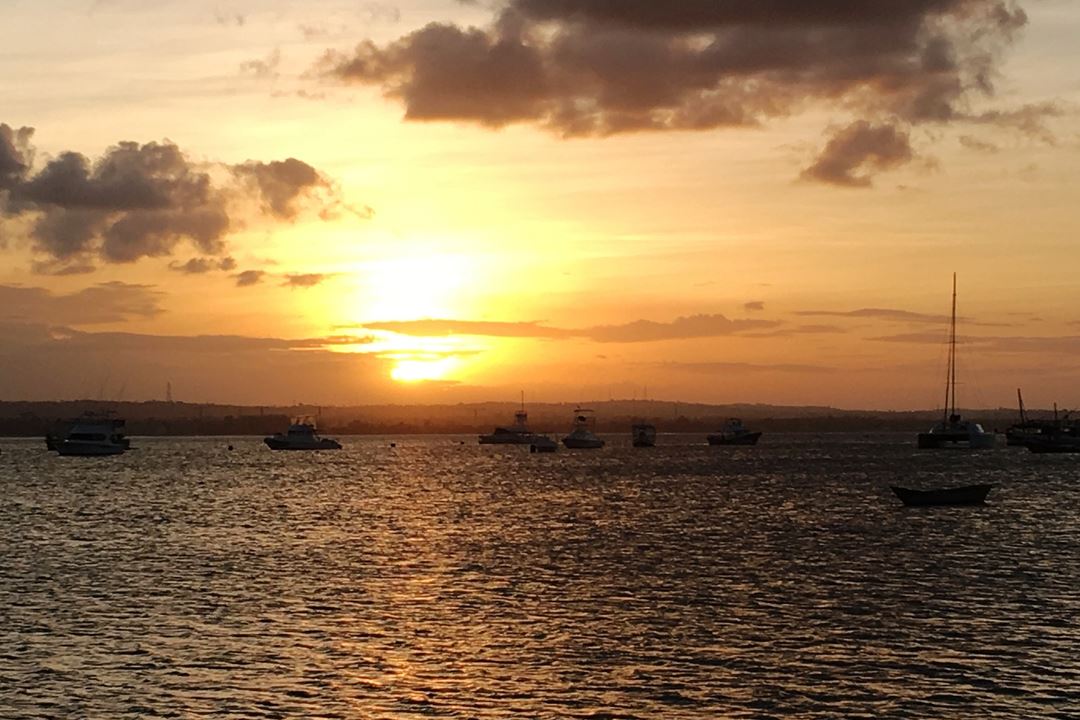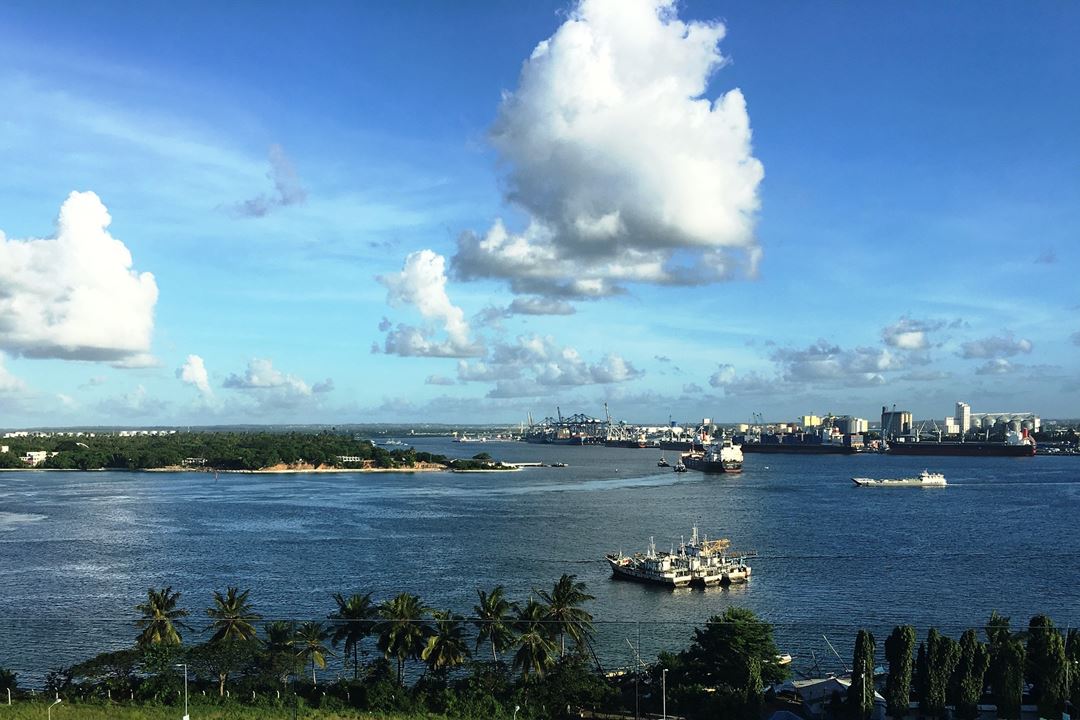Why visit Dar es Salaam
Dar es Salaam is a thrilling and charming destination for those who want to experience Tanzania's natural beauty, beaches, food and culture.
Tanzania's Dar es Salaam, also known as "the city of peace," is a vibrant and cosmopolitan city in East Africa. It is the region's financial hub and a cultural and historical centre. The city was founded by the Sultan of Zanzibar in 1862 and has since developed into a modern metropolis with a rich diversity of architectural styles, ethnic groups, and religions.
There’s a wide range of attractions and activities for all preferences and budgets. From exploring the colourful markets to enjoying the stunning Indian Ocean’s white sandy beaches. The city is also the gateway to some of Tanzania's most iconic national parks and wildlife reserves. At the same time, the historic and captivating Zanzibar Island is just a short trip away.
We encourage you to consider a night or two in Dar es Salaam on your way to your wildlife safari. We promise to take care of your whole trip and show you the best of Dar with much to offer. You can learn about the country’s history and fascinating culture. The National Museum, delicious, barbequed street foods, and day trips to Oyster Bay, also known as Coco Beach, just north of the city, or Bongoyo Island, are highly recommended. Shop for local crafts at Kariakoo Market, snorkel in clear waters and spot dolphins and turtles.
Where is Dar es Salaam
If you are searching for a dynamic and diverse destination, Dar es Salaam in Tanzania is the place to arrive. It is the country's largest and most cosmopolitan city on the stunning tropical Indian Ocean coast, just a short hop from Zanzibar Island's idyllic white sandy beaches, and the gateway to Tanzania’s exclusive southern safari parks. Dar es Salaam offers every traveller a rich blend of cultures, cuisines and attractions.
What to see and do in Dar es Salaam
Whether flying in for a Dar es Salaam adventure or a relaxing beach getaway, you will find plenty to explore and enjoy in Dar es Salaam, also known as ‘Dar’. You can sample the delicious fusion of Swahili, European, Arab, and Indian flavours in the city's many restaurants, from spicy curries and barbequed meats to fresh seafood and pizza. At sunrise, there is the vibrant Kivukoni Fish Market to explore, where fisherfolk sell their fresh catches of the day. It’s a marvellous experience, splashed with local colour.
To immerse yourself in the city’s diverse heritage and food traditions and be surrounded by the sights and aromas of its traditional foods and culture, visiting the Kariakoo Market is a must. This authentic market spreads over a few busy city blocks. It offers home goods, local and international fashions, and myriad foods.
The city is famous for its mouth-watering street foods, which include juicy barbecued chicken, beef, and fish. These street foods are a must-try for visitors and represent the city's liveliness and enthusiasm. While exploring the streets and savouring the local cuisine, you can also learn about the city's history and art by visiting museums and galleries.
The National Museum is widely regarded as one of the top museums in Tanzania. It takes visitors on an engaging journey through the country's intriguing history. One of the highlights of your trip will be the Olduvai Gorge archaeological exhibit, which offers a fascinating glimpse into our earliest human history. The museum also features an enlightening exhibit on the slave trade during the colonial period.
Dar es Salaam boasts a fascinating mix of architectural styles, reflecting its colonial, Arab and Indian heritage and modern-day development. You can admire the old colonial buildings in the city centre or marvel at the skyscrapers that adorn the skyline. Escape the city’s hustle and bustle by visiting the nearby beaches and islands. On a Dar es Salaam safari, you can bask in the sun, lounge on the city’s pristine white sands, and swim in the warm sea.
Privately Arranged City Adventures
To fully immerse yourself in this vibrant, energetic and bustling city, we can arrange a private guide to take you around comfortably. Our friendly and knowledgeable guide will showcase the finest adventures, historical sites, and cultural and culinary experiences you would want to enjoy.
Coco Beach
Stunning Coco Beach is in the Oyster Bay area of the city. One of the more famous beaches, it’s known for its white sandy shorelines, clear blue waters, and swaying tropical palm trees. It provides a perfect escape from the hustle and bustle of the nearby city.
Botanical Gardens
To enjoy the local nature and plants, you must visit the Botanical Gardens in the city centre. You can observe over 600 plant species, including rare and endangered ones such as the scarlet flame tree, the cycad, and the jacaranda.
National Museum
The National Museum is an intriguing attraction for those keen on learning about Tanzania's rich history and diverse culture. The museum boasts remarkable fossil exhibits that showcase our earliest human ancestors, fascinating displays of its challenged colonial past, and an impressive collection of vintage cars.
Mamboz Corner BBQ
Indulge in succulent, spicy Zanzibari chicken, mouth-watering fried seafood dishes, and local snapper fish specialities at this bustling traditional street food market. The market is close to the finest hotels and is just a six-minute drive to the National Museum.
Bongoyo Island
Bongoyo Island is a small, uninhabited island and part of the Dar es Salaam Marine Reserve. It’s a popular day trip for swimming, snorkelling, relaxing on the beach, and eating fresh seafood at the island’s restaurant. It’s home to various turtles, dolphins, and fish.
Dar es Salaam Accommodation
The city's size and location ensure many Dar es Salaam accommodation options. Depending on your budget and preferences, you can choose from a wide range of hotels, such as the luxurious Five Star Hyatt Regency, the boutique Blue Sapphire, or the well-known and Serena Hotel. Our trip planning team would be happy to assist you in selecting the perfect property.
Our Top Tanzanian Safari Itineraries
We create customised safari itineraries to match your preferences and budget. Below are some of our most iconic itineraries to inspire you and help you start planning your trip.
 itinerary
itinerary
All Asilia: Southern Tanzania circuit
Discover the hidden wildlife jewels of Southern Tanzania - a true nature lovers delight.
 itinerary
itinerary
All Asilia: Northern Tanzania circuit
Explore the vast beauty of northern Tanzania's wildlife reserve over 9 days.
 itinerary
itinerary
Best Bush & Beach Families
A family safari is a holiday like no other. You’ll create memories that will last a lifetime, enjoy new experiences together and spend quality time away from the distractions of the real world. You wi…
 itinerary
itinerary
Northern Tanzania Explored
With vast wilderness areas that teem with big game, interesting cultures, easy logistical links, and some of the most iconic landscapes on the planet, northern Tanzania offers a safari experience like…
 itinerary
itinerary
Exclusive Tanzania
Enhanced by the incredible beauty of the East African landscape, our Reserve Camps featured in this itinerary exude character and meticulous attention to detail. Every desire is beautifully met; from…
 itinerary
itinerary
Pure South Tanzania
Tanzania’s Southern regions have always been a well-kept secret amongst those looking for a more exclusive or ‘off the beaten path’ safari experience.
Your adventure in East Africa awaits. If you're ready to chat to us about your dream safari, our team will guide you every step of the way.








